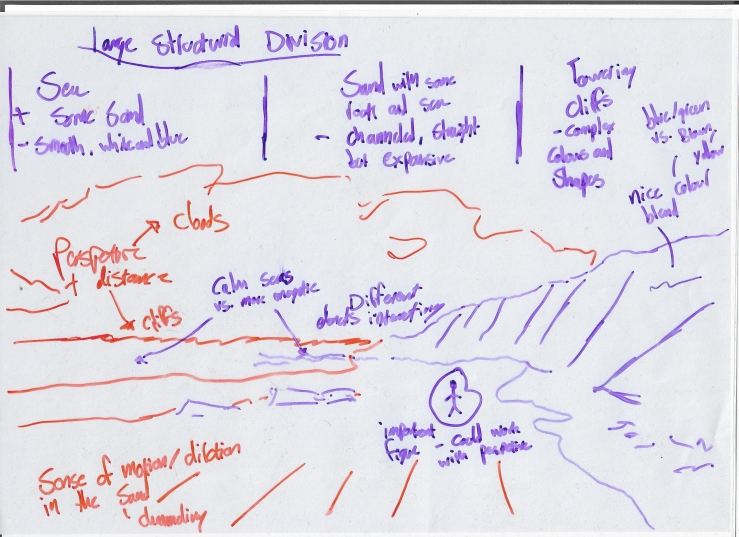I think the scene created here is quite magical. The solitary figure and bordering cliff sides isolate the piece, almost secluded from time itself, whilst the bold blue sky gradually fades behind thickening cloud. Boudin painted this piece following Trouville’s growth in tourism and transport during the late 1800s, which to me gives this untouched landscape even more poignancy. I wanted to portray the sounds that instantly sounded in my head upon first viewing, paying particular attention to the rich variety of material elements that make up the piece, from the dense rocky cliffs to the deep, flowing ocean.
From programme notes
A Beach Near Trouville is a sequestered spot. The wonderfully illustrated topography encapsulates a moment of union between a Fisherwoman and the vast open world free from all but the senses. What most inspires me about this piece however, is not these bold features and their spacious portrayal, but instead what isn’t seen. A large number of Boudin’s coastal works are dominated by human endeavour, whether through large vessels as in Sailing Boats at Quay or simply large crowds as in many of his Beach Scenes, and so the solitary fisherwoman figured in my chosen piece, and the particular way the boundaries here work to channel focus towards her seems all the more important. Of course Boudin painted many other coastal landscapes free from human touch, and it was not this fact nor Trouville’s interesting history during Boudin’s lifetime that drew me to it, but I felt these points helped inform my judgement of the painting and I wanted to incorporate elements of them in my work.
My ambition was to create something immersive, taking the perspective of the fisherwoman and exploring the sensory riches that surround her. I took some field recordings at Cosby Beach in Liverpool in order to portray the imagined environment I heard when viewing the painting, mainly capturing bird songs, the coastal breeze and a distant rumbling sea. Using field recordings was defiantly of benefit as it instantly gave me a collection of sounds that surrounded the stereo field with immersive effect.

Beyond my emotional response, I wanted to deconstruct the physical aspects of the painting, the different material elements that make up its structure. In this I wanted to find a way to interpret the formal aspects such as colour and structure, conscious decisions made by the painter that helped create my own emotional response and help define the material nature of the subject. My decision was to take the lateral structure from left to right and use this as the basis for my own form. As can be seen, the piece is quite symmetrical – there is a single channel of sand through the centre with contrary sea and cliff sides on either edge. I had the idea to extract certain qualities of each of these three elements and use them as the basis for different sections within my piece.
This translated into a slowly ebbing dialogue of rich, harmonious tones for the first section, a more granular and brittle middle section, and a damp, laboured final section. The sea is calm at close distance, drifting onto the shore line rather than crashing fiercely however there are distant more restless waves visible, depicted through rough, blurred strokes of paint. The sand and rocks seem to react similarly, their boundaries unclear and almost chaotically presented.I thought these aspects of the painting made up an important feature in giving the piece its character and so tried to depict the interactions musically. This I aimed to achieve through chaotic or disrupted transitions, as well as through recurring motivic ideas.
